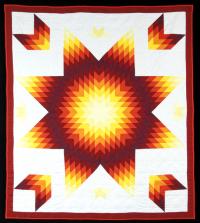The Dakota have lived and traveled in what is now called the United States for thousands of years. Their values and many contributions have enabled life today. In areas ranging from science, food, medicine, art, and political organization, the Dakota created a model for sustainable life in the Upper Midwest.
Foods like the "Three Sisters"--corn, squash, and beans--were staples of Dakota diet before contact with Europeans. The buffalo's meat, hide, and bones were used for food, tools, and clothing. Maple trees provided natural sugar for cooking, and one of the earliest forms of candy. Sustainable ways of hunting and farming were valued and provided a model for responsible stewardship of the earth. 
The councils of the Oceti Ŝakowiŋ were a form of democracy, maintaining a tradition that was upheld by Indian nations for thousands of years. Militarily, Native Americans, including the Dakota, have defended the United States in the highest proportional numbers of any racial or ethnic group.
Dakota artwork such as quilting, beading, and painting still speak to us today.
Dakota stories and scientists still inform us about human creation, evolution, and natural processes on earth and in space.
Dakota language informs us about the first names of places we see everyday, reminding us that the land we live on has an immensely broad history. Its words also remind us of the customs, relationships, and spirituality within language and connect us in a meaningful way with each other.
Cash, Joseph H., and Herbert T. Hoover. To Be an Indian: An Oral History. New York: Holt, Rinehart, and Winston, 1971.
Websites
Lakota and Dakota Sioux Fact Sheet
Primary
Cash, Joseph H., and Herbert T. Hoover. To Be an Indian: An Oral History. New York: Holt, Rinehart, and Winston, 1971
U.S.-Dakota War of 1862 Oral History Project. Minnesota Historical Society.




